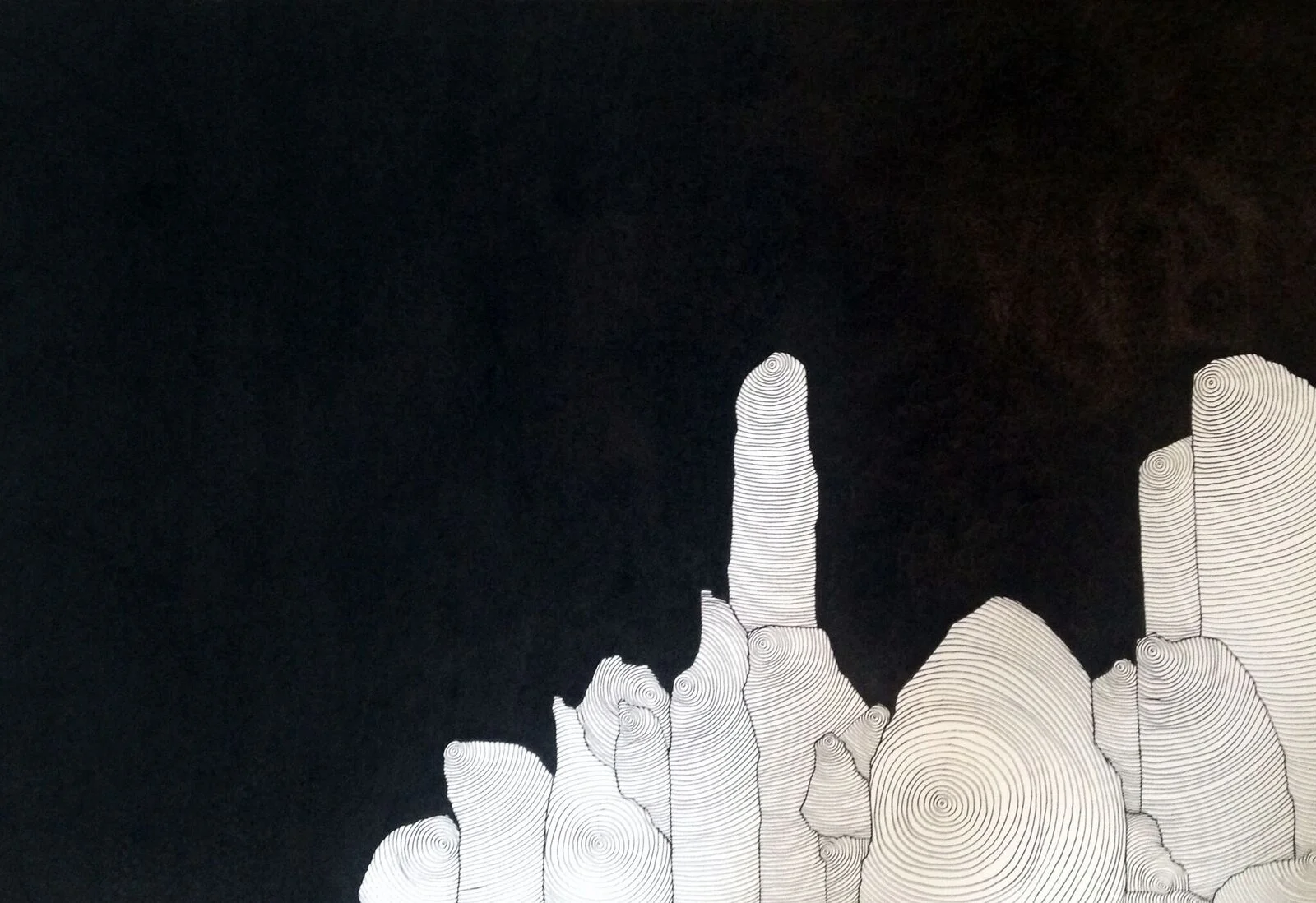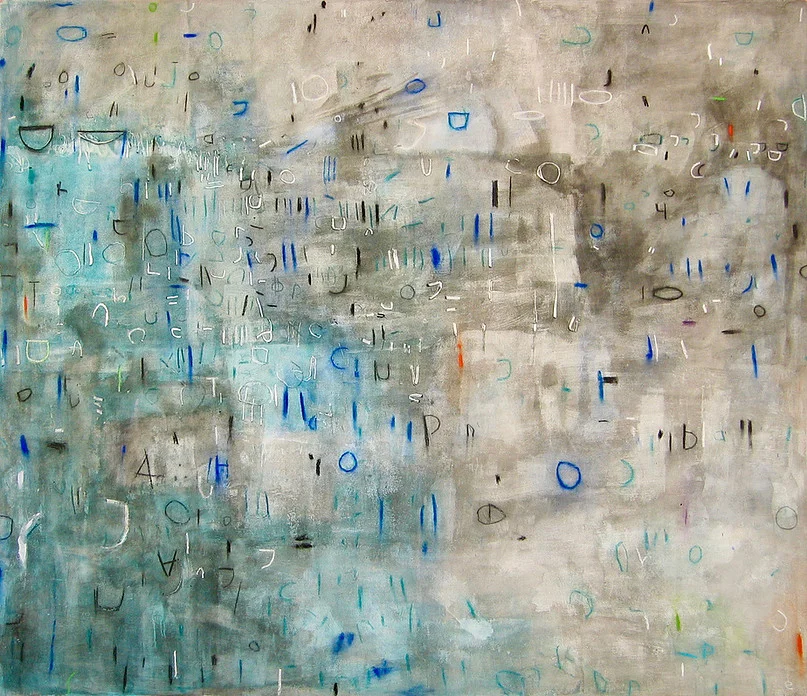Marco Pinter: Gravity, Lobero Theatre, Santa Barbara
Photos by Carly Otness
Among this year's OPUS New Mythos Artists performing at The Lobero Theatre's collection Out of the Mud & Ashes, Marco Pinter will present his new work Gravity.
Under the choreography and concept development of Pinter, the experimental dance responds to the Thomas Fire and Jan. 9 debris flows in a sculptural dance that uses soft weights to manipulate the perception of the body and to add a burden to movement.
LUM: Brass tacks. Who choreographed Gravity? Who are the dancers? Who created the costumes? Who composed the music?
Marco Pinter: Choreography & concept: Marco Pinter. Dancers: Nicole Powell, Robin Wilson and Lauren Serrano. Costumes: Mindy Nelson. Music composed by: Nicholas Britell, Astor Piazzolla and Heinrich Ignaz Franz von Biber.
For costumes, I originally consulted with Anaya Cullen (former costumer for State Street Ballet) on the design of the costumes needed to realize this vision. I then worked with Mindy Nelson on and off over more than a year. Mindy created all the costumes used in the performance, and integrated her own aesthetic into the colors and styles.
What brought you to dance to tell this story?
I feel this is more of an abstract exploration of certain themes and ideas. I love working with dancers. The themes here were around burden and community and transformation, and working in dance seemed the best route (versus kinetic sculpture or interactive art, which I also work in frequently).
Why did you title the piece Gravity?
I feel Gravity is still a working title and may evolve in the future. But it seemed the obvious choice. The piece is about weight and burden, both literally and figuratively.
The movement is broad and angular. How did you generate this movement and visual lexicon?
The development of the gestures and motifs in this piece actually started over a year ago. I brought a number of dancers into the studio to play with the soft weights and "rehearsal costumes" that were quickly pieced together. Several dancers helped source some beautiful material who are not in the final performance, including Brooke Smiley, Kaita Lepore Mrazek, Nikki Pfeiffer and Tim Wood; and I'm very grateful to them. And the current dancers -- Nicole, Robin and Lauren -- have been absolutely critical in the process of creating material and turning a chaotic set of ideas into a single cohesive performance.
The dancers wear soft weights under lycra-spandex that alters their physical appearance and movement. There’s a tension there between grace and burden. Is there a conceptual point at which that tension will break?
The piece is structured into three segments, each about three to four minutes long. It begins with an exploration of weight as a burden, and what that means and how it feels. Then in the middle there is a more dream-like, whimsical section where the weight becomes a partner in a bizarre pas-de-deux tango. The final segment explores how that weight/burden can become an opportunity, for both an individual and a community. Just as a capsule sent to Mars uses Earth's gravity as propulsion (whipping around the Earth and then slinging into space), so too can the "burden" of the weight actually be a gift, allowing new forms of movement that are not possible without it.
When the dancers lift their arms and the soft weights swing outward, there’s a sense that they are expanding, and also some of the control gives way to the physics of the weight. Can you speak to the idea of control in this piece?
This piece turned out to be very physically challenging on the dancers. It basically alters the physics of their bodies in a manner they've never experienced before. The lines that are created can appear both beautiful and awkward. There is more uncertainty in this piece from one rehearsal/performance to the next, relative to other dance works, because the trajectory of the weights is not entirely predictable. Every time it is different.
How do you consider the technical verse expressive aspects of Gravity?
Gravity is a technically challenging piece – the costumes had to be re-engineered multiple times to support the G-forces applied by the dancers and the weights. At the same time, since in the past I've often used sensors and computers and projections with dance pieces, it is refreshing for this work to be "low tech," where the challenges are physical and not digital. As the rehearsals continued, we were able to transition from spending a lot of time overcoming the physical challenges of the weights and costumes, and increasingly spend more time focusing on the nuances of what we want to express.
The piece will be performed in Out of the Mud & Ashes at the Lobero Theatre. How do you contextualize Gravity as a response to the Thomas Fire and Jan. 9 debris flows?
Gravity is an abstract dance piece. Other performers at Out of the Mud & Ashes will be dealing with the fire and mudslides more literally and directly, which is great. In contrast, Gravity deals with more abstract concepts of burden and release and community.
In addition to dance, what other artistic forms inhabit Gravity?
Sculpture, primarily. There are multiple points in the piece where I refer to one or more dancers in terms of static or kinetic sculpture. Since as a visual artist I work with choreographed kinetic sculpture, I guess it was unavoidable that it would enter into the choreography.
What artistic works do you think influenced or preceded Gravity?
I love dance and sculpture, and in some way probably every sculpture and dance piece I've seen has been an influence. We're really lucky in Santa Barbara to have world class dance performances come through town as part of the UCSB Arts & Lectures series, and I've seen almost every one over the last 15+ years.
What is the central question that you think Gravity poses and then leaves unanswered?
When can a burden become an opportunity?
Describe Gravity in three words.
Burden, Community, Transformation
Gravity will be performed on Oct. 6, 2018 in Opus Archives and Research Center Presents Out of the Mud & Ashes, featuring winners of the 2018 New Mythos Artists Grant at the Lobero Theatre, 33 E. Canon Period St., Santa Barbara. www.lobero.org
•
Want to write for Lum Art Zine? Contact editor@lumartzine.com.
Interested in how you can support Lum Art Zine? We are currently seeking sponsors for Lum Art Zine’s Summer 2020 issue. To get involved or to make a donation, contact editor@lumartzine.com.





